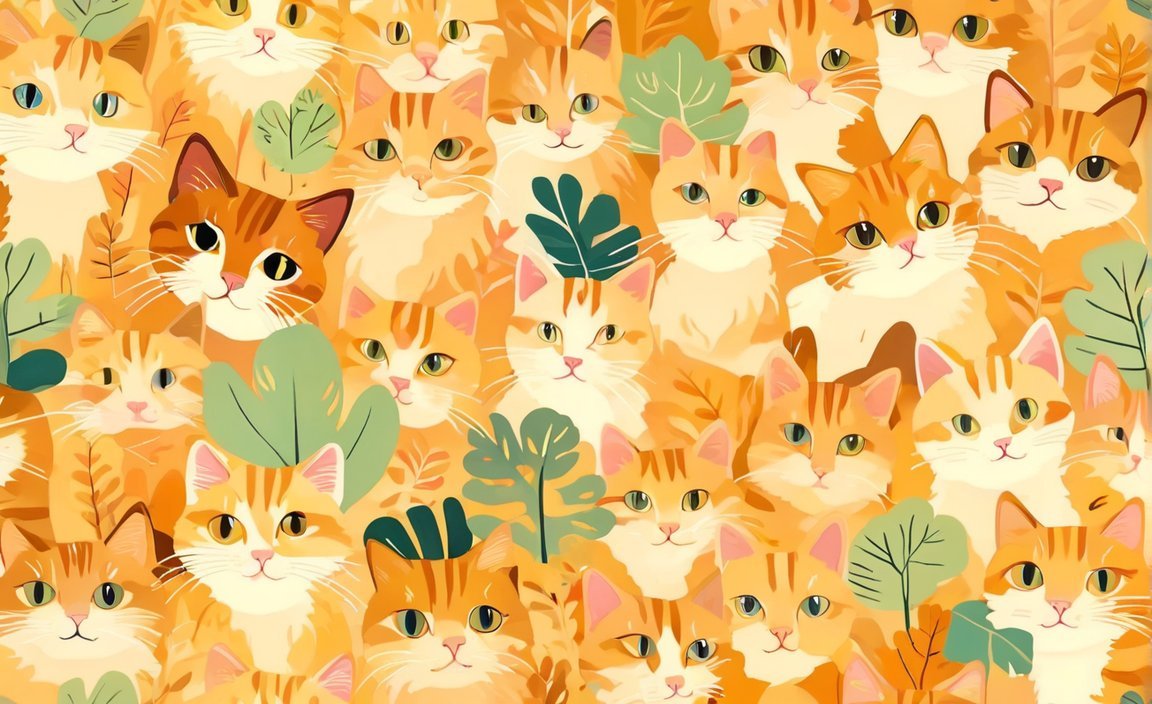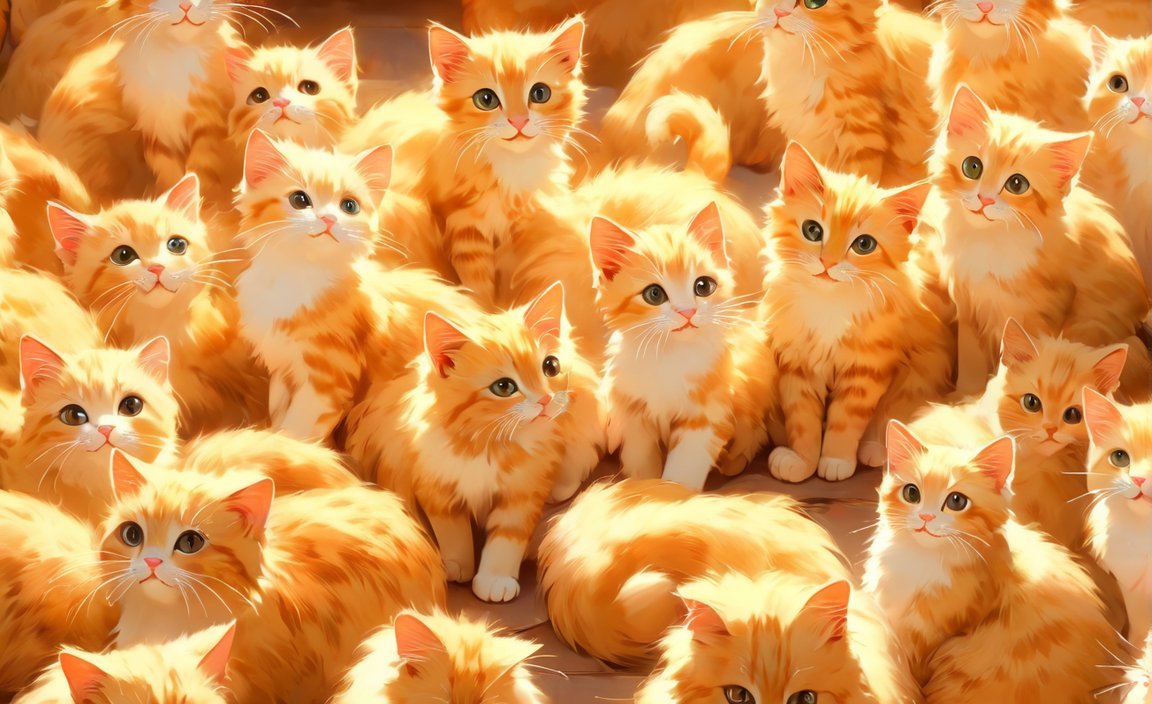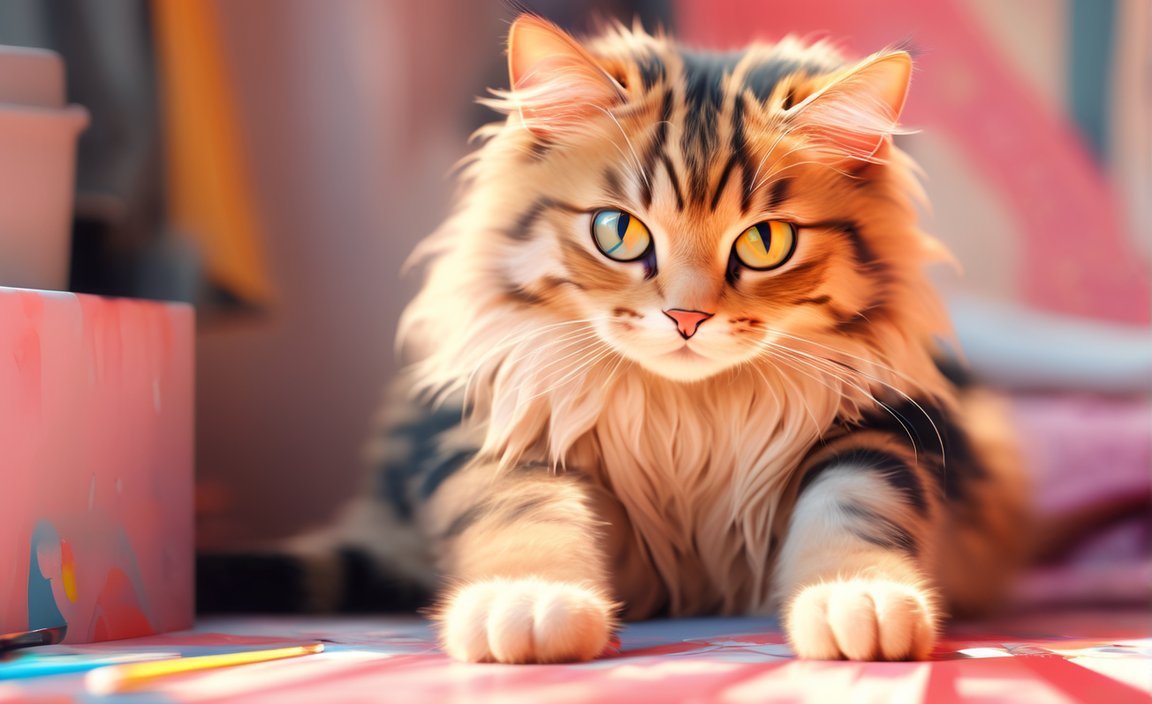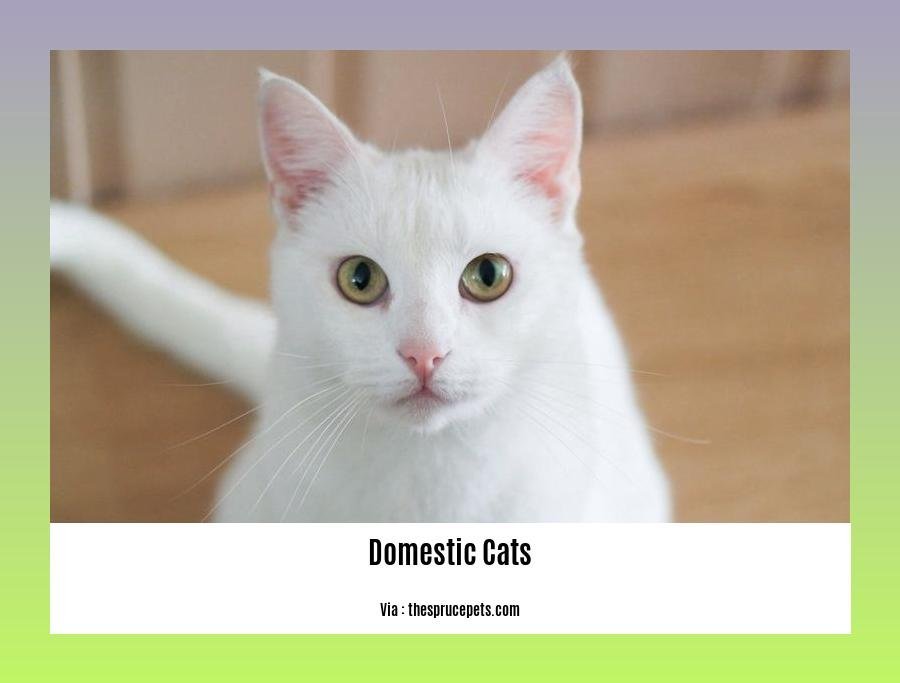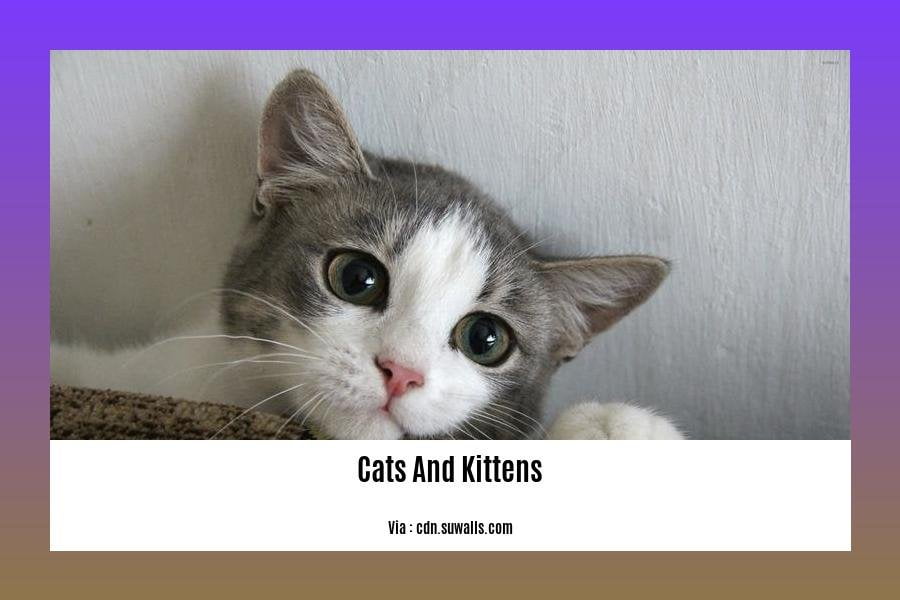Welcome to “Cats Unleashed: 10 Fascinating Feline Facts Revealed,” where we dive deep into the captivating world of our beloved furry friends. Prepare to be enthralled as we explore the intriguing and often mysterious nature of cats. From their mysterious behavior to their unique biological traits, this article will uncover ten fascinating facts that will leave you in awe of these enchanting creatures. So, get ready to embark on a journey of discovery and unlock the secrets behind our feline companions.
Key Takeaways:
- Cats sweat through their paws.
- Cats navigate using the sunlight.
- Declawing cats is illegal in many places.
- Cats dream just like humans do.
- Cats sleep up to 18 hours a day.
- Cats only meow to communicate with humans.
- Calico and tortoiseshell cats are usually female.
- Cats can run up to 30 miles per hour.
- Cats have two vocal cords.
- Purring can influence human emotions.
10 Fascinating Facts About Cats
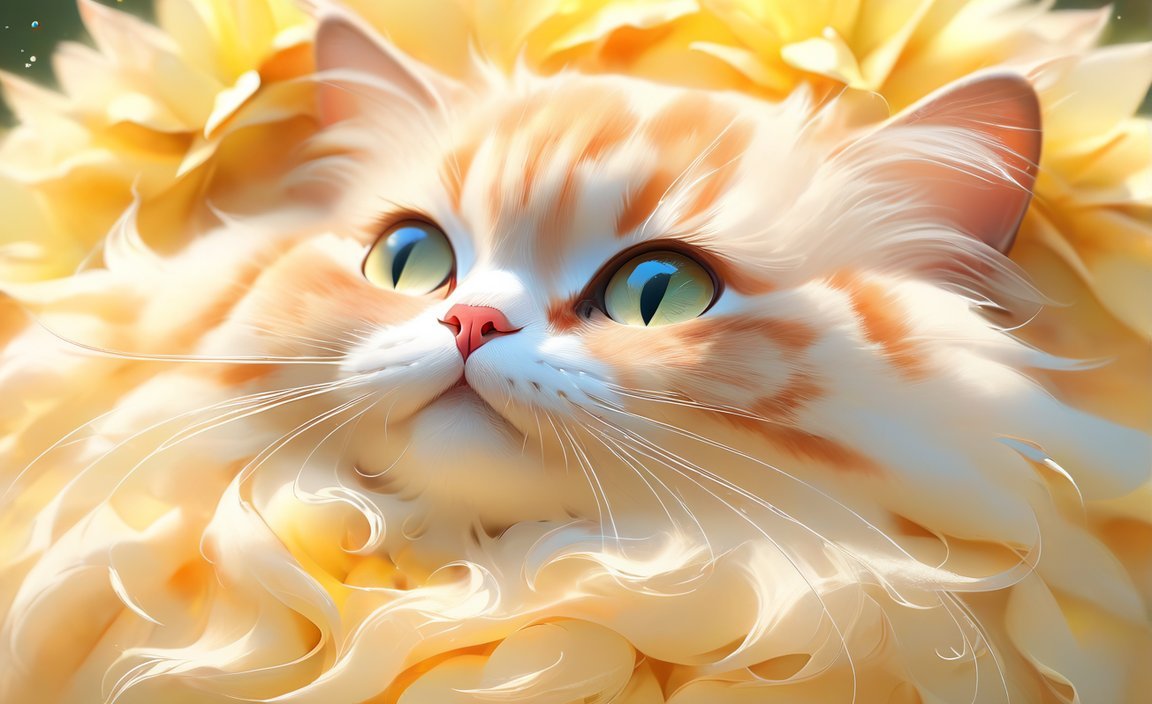
Did you know that our feline friends have some truly amazing traits and behaviors? Cats are mysterious creatures with a rich history alongside humans. They have a unique set of attributes that make them fascinating and captivating companions. In this article, we will dive into the intriguing world of cats and uncover 10 fascinating facts about them that you may not be aware of.
1. Cats Sweat Through Their Paws
Unlike humans, cats don’t have sweat glands all over their bodies. Instead, they rely on their paws to regulate their body temperature. When a cat gets warm, it will perspire through its paws, leaving behind tiny wet paw prints.
2. They Navigate Using the Sunlight
Cats are known for their exceptional navigational skills, and one of the ways they do this is by using the sunlight. They have a built-in “compass” in their eyes that allows them to detect the sun’s position and use it as a reference point to find their way back home.
3. Declawing is Illegal in Many Places
Declawing cats may seem like a common practice, but it is actually illegal in many countries and regions. Declawing involves the amputation of a cat’s toes and can cause immense pain and long-term damage to the cat. It’s important to explore alternative options for managing their claws, such as regular nail trimming and providing suitable scratching posts.
4. Cats Dream!
Just like humans, cats experience dreams during their sleep. When you see your cat twitching or moving its paws while asleep, it could very well be exploring its dream world. What do you think they dream about? Maybe they’re chasing mice or playfully batting at a string!
5. Cats Sleep Up to 18 Hours a Day
Cats are renowned for their ability to sleep, and they take full advantage of it! On average, cats sleep for approximately 12 to 16 hours a day. Some cats may even sleep up to 18 hours! They are true masters of relaxation and can find the comfiest spots to curl up for a nap.
6. Cats Only Meow for Humans
When cats communicate with each other, they rarely use meowing as a form of expression. Instead, meowing is primarily reserved for interactions with humans. Whether they want food, attention, or simply want to say hello, cats have learned that using their vocal cords to meow is an effective way to get their message across to us.
7. Calico and Tortoiseshell Cats are Almost Always Female
If you’ve ever noticed that most calico and tortoiseshell cats are female, you’re not imagining things. These coat patterns are connected to the cat’s genetics, and the genes responsible for these patterns are closely linked to the X chromosome. This means that the chances of a male cat inheriting these coat patterns are quite rare.
8. Cats Can Run Up to 30 Miles Per Hour
When it comes to speed, cats are surprisingly swift. They possess incredible agility and can run at impressive speeds, reaching up to 30 miles per hour. This incredible burst of energy allows them to pounce on their prey or quickly escape from potential dangers.
9. Cats Have Two Vocal Cords
Unlike humans, who have one vocal cord, cats have two! This unique feature gives their meows and purrs a distinct quality that is instantly recognizable. It’s one of the reasons why cats can produce a wide range of sounds, from gentle purring to loud and demanding meows.
10. Purring Can Influence Emotion in Humans
Have you ever noticed how a cat’s purr has a calming effect on you? Well, there’s a scientific reason behind it. The frequency of a cat’s purr falls within the range that promotes healing and relaxation in humans. The vibrations created by a purring cat can reduce stress, anxiety, and even lower blood pressure.
As cat lovers, we can never get enough of these remarkable creatures and their enchanting behaviors. These 10 fascinating facts about cats only scratch the surface of what makes them such extraordinary companions. Cats truly have a way of captivating our hearts and adding a touch of magic to our lives.
If you’re fascinated by sea creatures, you won’t want to miss out on these 10 mind-blowing facts! Click here to uncover the incredible world of sea creatures: 10 facts about sea creatures.
Did you know that worms play a crucial role in maintaining soil health? Learn more intriguing facts about these unsung heroes by clicking here: 10 facts about worms.
Discover the captivating world of arctic wolves with these 10 fun facts! You won’t believe the incredible adaptations that allow these majestic creatures to thrive in extreme environments. Click here to find out more: 10 fun facts about arctic wolves.
Cats Communicate Through a Complex System of Vocalizations, Body Language, and Scent Marking
Cats are mysterious creatures that have captured the hearts of humans for centuries. Their enigmatic nature extends beyond their independent and curious personalities, as they possess a complex system of communication that relies on vocalizations, body language, and scent marking. In this article, we will dive into the fascinating world of cat communication and explore how they express their needs, emotions, and intentions.
Vocalizations: More than Just Meows
When we think of cat communication, the first thing that comes to mind is often their meows. However, cats communicate through a diverse range of vocalizations that go beyond the simple “meow.” From chirps and trills to growls and hisses, each vocalization serves a specific purpose. For instance, a low growl may indicate aggression or fear, while a gentle purr often signifies contentment or a desire for attention. By paying attention to the nuances of their vocalizations, we can gain insight into a cat’s emotional state and intentions.
Body Language: A Silent Dialogue
While cats are capable of producing an array of vocalizations, they also communicate extensively through body language. From the positioning of their ears and tail to their posture and facial expressions, cats use their bodies to convey a wealth of information. An arched back accompanied by an upright tail, for example, may signal excitement or aggression, while a relaxed and low-hanging tail can indicate contentment. By observing a cat’s body language, we can decipher their moods and intentions, allowing for better understanding and communication.
Scent Marking: Leaving Their Signature
Another vital aspect of cat communication is scent marking. Cats possess scent glands in various parts of their bodies, including their cheeks, paws, and tails. Through rubbing their bodies, scratching objects, and spraying urine, cats leave behind scents that serve as messages for other cats. Scent marking allows cats to establish their territories, communicate their presence, and convey information about their reproductive status. These potent chemical signals play a significant role in social interactions within the feline community.
Key Takeaways:
- Cats communicate using a diverse range of vocalizations, including meows, chirps, purrs, growls, and hisses (source: National Center for Biotechnology Information).
- Body language is a vital component of cat communication, with cues from ear positioning, tail movements, posture, and facial expressions providing valuable information (source: Pet Keen).
- Scent marking is an integral part of cat communication, allowing cats to establish territories and convey messages to other felines.
Through their complex system of vocalizations, body language, and scent marking, cats have developed an intricate language to communicate with their kind and even with their human companions. By paying close attention to these forms of communication, we can strengthen our bond with our feline friends and better understand their needs and desires. So, the next time you interact with a cat, take a moment to listen, observe, and appreciate the fascinating ways in which they communicate.
Cats Exhibit Fascinating Behaviors: Unveiling the Intriguing World of Feline Hunting Instincts and Social Dynamics
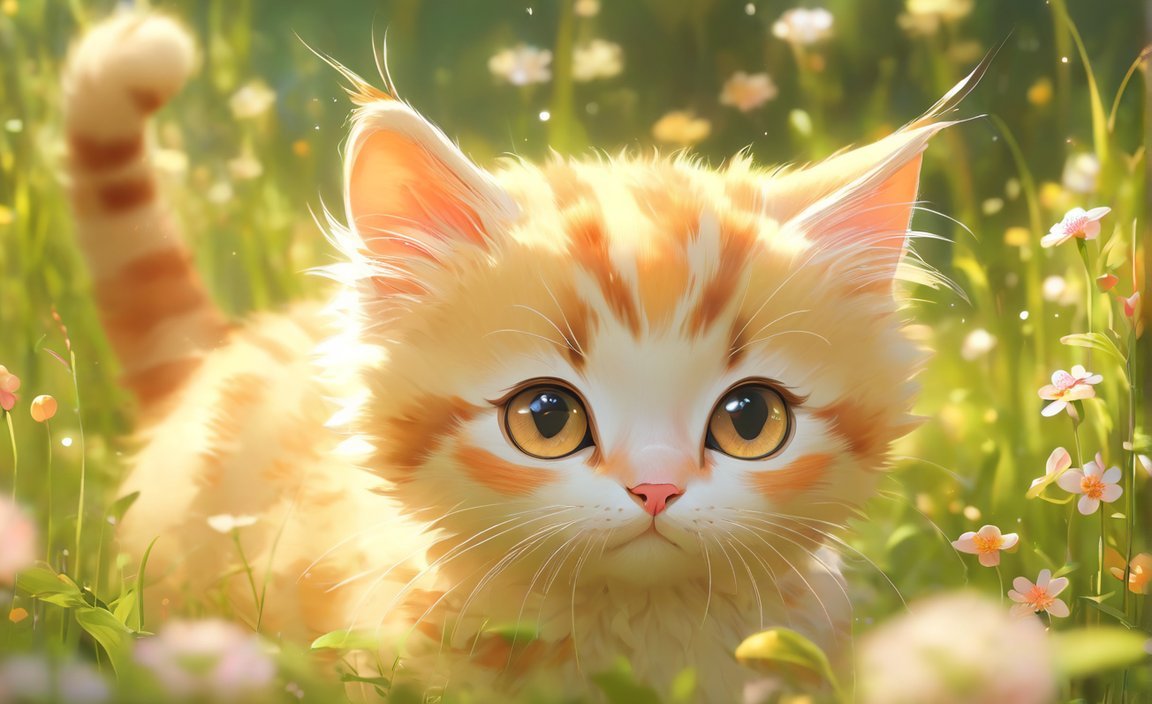
Cats, the enigmatic creatures that grace our homes and captivate our hearts, possess a multitude of fascinating behaviors that continue to intrigue and delight us. From their innate hunting instincts to their intricate social dynamics within colonies, cats offer us a glimpse into their mesmerizing world. In this article, we delve into ten captivating facts that shed light on these remarkable attributes of our beloved feline companions.
1. Cats and their Unmistakable Hunting Instincts
Cats exhibit fascinating behaviors rooted in their primal hunting instincts. Whether indoors or out, these skilled predators engage in behaviors like stalking and pouncing, mirroring their wild ancestors. The natural desire to hunt drives cats to display their agile prowess, demonstrating their prowess as formidable hunters.
2. Ancestors and Solitary Hunters
Domestic cats, much like their wild ancestors, are specialized solitary hunters. In fact, their ancestors were kept primarily for their pest-controlling abilities rather than companionship. This selective breeding ensured that only the most skilled hunters survived and reproduced, leading to the development of cats’ exceptional hunting skills.
3. Hunting as Play and Predation
Hunting behavior in cats is not solely driven by hunger. It can also stem from the instinctual need to engage in play and predation. As natural-born predators, cats demonstrate their agility and hunting prowess through playful behavior, even when not driven by hunger.
4. The Pent-up Hunting Instinct
The pent-up hunting instinct in domesticated cats contributes significantly to their hunting behavior. As indoor pets, they may exhibit heightened hunting instincts due to reduced opportunities to engage in natural hunting activities. Understanding this behavior helps us empathize with their instinctive drive and find suitable ways to redirect their energy.
5. The Complex Nature of Cat Behavior
The realm of cat behavior encompasses various aspects such as body language, elimination habits, aggression, play, communication, hunting, grooming, urine marking, and face rubbing. Each behavior offers a unique insight into the intricate world of feline cognition and social dynamics.
6. Mothers as Teachers
Hunting is an instinctual behavior inherent in all cat species, and mothers play a vital role in teaching their kittens how to hunt. Through patient guidance and practice, mother cats impart essential hunting skills to their young, ensuring their survival in the wild.
7. Independent Nature and Hunting
Cats’ independent and sometimes aloof nature can be attributed, in part, to their historical reliance on hunting for sustenance. In the past, cats had to rely on their ability to hunt for their own food, fostering their independence and self-sufficiency.
8. Decoding the Meaning Behind “Gift-Giving”
Understanding cats’ hunting behavior can shed light on why they exhibit such behavior and the symbolism behind their “gift-giving.” When cats bring us their “presents,” such as small animals or toys, it is a testament to their hunting prowess and their desire to provide for their human companions.
9. Birds as Triggers
The simple act of watching birds through a window can trigger a cat’s hunting mode, leading to intriguing behaviors such as making chattering sounds caused by special jaw movements. These spontaneous reactions highlight the deep-rooted predatory instincts embedded in their nature.
10. The Fascination Behind Cat Societies
While cats are known for their independence, they can also exhibit social dynamics within colonies. In certain situations, cats may form social groups, where they establish hierarchies, engage in mutual grooming, and display cooperative behaviors. Exploring these social dynamics reveals the multifaceted nature of feline companionship.
Key Takeaways:
- Cats exhibit fascinating behaviors rooted in their primal hunting instincts, such as stalking and pouncing.
- Domestic cats are specialized solitary hunters, driven by their innate drive to hunt.
- Hunting behavior in cats can be motivated by play, predation, and the instinctual need to engage in hunting activities.
- The pent-up hunting instinct in domesticated cats contributes to their hunting behavior.
- Cat behavior encompasses various aspects, including body language, elimination habits, aggression, communication, and hunting.
- Mother cats teach their kittens essential hunting skills.
- Cats’ independent nature can be attributed to their historical reliance on hunting for sustenance.
- Understanding the symbolism behind cats’ “gift-giving” reveals their hunting prowess and desire to provide for their human companions.
- Watching birds can trigger a cat’s hunting mode, resulting in intriguing behaviors such as chattering sounds caused by special jaw movements.
- Cats can exhibit social dynamics within colonies, highlighting the complexity of feline sociability.
Sources:
– Explore Cats: Hunt, Hide, Nap: How Natural Instincts Drive an Indoor Cat’s Behavior
– International Cat Care: Understanding the hunting behaviour of cats
Cats have a profound impact on human health and well-being, both physically and emotionally
Cats, those enchanting creatures that steal our hearts and make us smile, have a deeper impact on our lives than we may realize. Their presence in our homes not only provides us with companionship but also offers a myriad of benefits for our physical and emotional well-being. From reducing the risk of heart attacks to relieving stress, here are 10 fascinating facts about how cats positively influence our health and happiness.
1. Cats are Heart-Healthy Companions
Cats have the remarkable ability to reduce the risk of heart attacks in their human companions. According to a study covered by Medical News Today, living with a cat has been associated with a lower likelihood of experiencing a heart attack. So, not only do cats warm our hearts figuratively, but they also contribute to their physical well-being.
2. Allergic? Cats Can Help!
Contrary to popular belief, having a cat in your home can actually protect against allergies and asthma. Research has shown that growing up with cats can reduce the risk of developing allergies and asthma later in life. Who knew a cuddly feline friend could offer such protection?
3. Stress Relief Through Cat Videos
Ever find yourself endlessly scrolling through cute cat videos on YouTube? Well, science has confirmed that watching these videos can actually improve your mood and reduce stress. So go ahead, indulge in some fluffy feline goodness to brighten your day.
4. A Soothing Presence
The calming presence of cats has a therapeutic effect on our well-being. Their gentle purring vibrations and the softness of their fur provide a soothing sensation that can reduce anxiety and promote relaxation. It’s no wonder many of us turn to our feline companions for comfort during challenging times.
5. Cats and Success Go Hand in Paw
Did you know that having a cat can contribute to your financial success? A recent study suggested that the responsibility and care involved in taking care of a cat can foster discipline, organization, and routine. These qualities can translate into success in other areas of life, helping you achieve your goals.
6. Cats as Contributors to Medical Research
Cats play a valuable role in medical research. They can be affected by immunodeficiency viruses, similar to humans. Advancements in feline immunodeficiency virus (FIV) research can have implications for human immunodeficiency virus (HIV) research as well. So, our feline friends not only bring joy to our lives but also contribute to scientific advancements.
7. The Joy of Cat Communication
Cats have a unique way of communicating with us humans. They use various sensory modalities like visual, olfactory, and auditory signals to express their needs and desires. Domestic cats have even specialized their meow to communicate with humans rather than with other cats. It’s as if they have their own language, tailored exclusively for us.
8. The Elegance of Cat Hunting Behavior
Cats possess natural instincts that drive their hunting behavior, even when they live indoors. Stalking, pouncing, and those adorable chattering sounds they make when watching birds are all part of their ancestral hunting instincts. A window view becomes their hunting ground, and these instincts remind us of their wild ancestry.
9. The Independent Nature of Cats
Cats have a reputation for their independent and sometimes aloof nature. This stems from their historical role as specialized solitary hunters. Unlike their canine counterparts, cats were originally kept as pest controllers rather than companions. Only the best hunters survived and reproduced, shaping their independent nature.
10. The Mysterious Gift-Givers
One of the intriguing aspects of cat behavior is their tendency to bring us “gifts” in the form of prey. These seemingly generous offerings are rooted in their instinctual hunting behavior and their desire to provide for their human “pack.” It’s their way of saying, “I care for you, and I want to share my success.”
Key Takeaways:
- Living with a cat can lower the risk of heart attacks.
- Cats can protect against allergies and asthma.
- Watching cat videos can improve mood and reduce stress.
- Cats provide a soothing presence that reduces anxiety.
- Cats foster discipline, organization, and routine, contributing to success.
- Cats contribute to medical research through immunodeficiency virus studies.
- Cats communicate using various sensory modalities.
- Hunting behavior in cats stems from their natural instincts.
- Cats’ independent nature reflects their historical role as hunters.
- Cats bring us “gifts” as a display of their hunting instincts.
Sources:
1. Medical News Today: How do cats contribute to your health and well-being?
2. Psychology Today: The Cat-Human Relationship and Factors That Affect It
FAQ
Q1: Can cats really sweat through their paws?
A1: Yes, cats sweat through their paws. This is one of the ways they regulate their body temperature.
Q2: Do cats use sunlight to navigate?
A2: Yes, cats rely on sunlight to navigate their surroundings. They use the sun’s position and the angle of sunlight to determine direction.
Q3: Is declawing cats illegal in many places?
A3: Yes, declawing cats is illegal in many places. It is considered an inhumane procedure and is prohibited in several countries and states.
Q4: Do cats dream?
A4: Yes, cats do dream. Like humans, cats experience periods of rapid eye movement (REM) sleep, which is associated with dreaming.
Q5: How many hours do cats sleep in a day?
A5: Cats sleep up to 18 hours a day on average. They have a natural inclination for long periods of rest and sleep to conserve energy.
- HelpCare Plus: Revolutionizing Affordable and Accessible Healthcare - December 29, 2024
- Boom & Bucket: Your Digital Marketplace for Used Heavy Equipment - December 28, 2024
- Ankle Bones Crossword Clue: Solutions, Tips & Anatomical Insights - December 28, 2024
